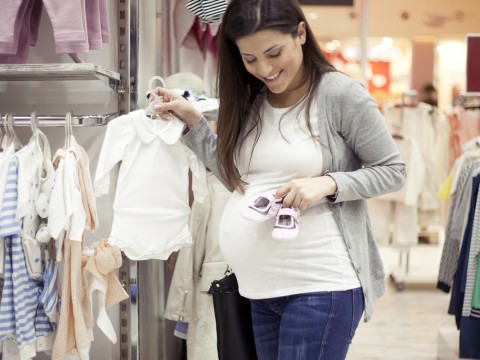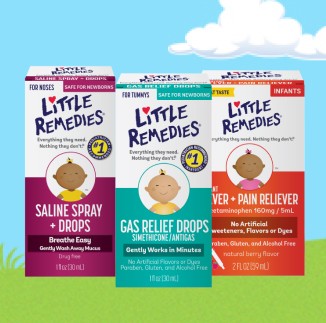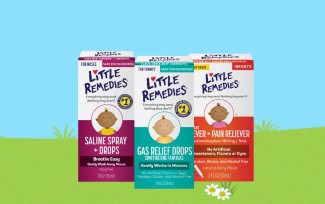


A Little More Wisdom
Just how big are Facebook and Instagram? Facebook currently sits at 2.2 billion monthly active users and Instagram has over 800 million monthly active accounts.
Before You Post that Adorable Baby Pic…
Written by on June 25th, 2018
It’s wonderful to share photos and videos of your baby with friends and relatives online. No matter how many miles are between you, they can still experience every special moment and milestone—including the hilarious, unexpected and goofy ones.
At Little Remedies®, we love connecting with moms on our Facebook page. Your funny stories, cute photos, helpful mommy tips and comments make our day! But of course, safety always comes first. That’s why we’re diligent about making sure our online community is a safe, trusted environment for your posts and conversations.
When it comes to your personal accounts, safety is just as important. We’ve compiled a list of helpful tips so you can surf like a smarty pants on two of the world’s biggest social media networks—Facebook and Instagram.
And we’ve included step-by-step instructions to make it easy-peasy.
Tidy up your friends and followers list
It’s always a good idea to review your friends and followers list every few months. Make sure your Facebook friends are truly friends and/or acquaintances. If you see a face or name you don’t recognize, take a look at their profile to see if you have mutual friends in common.
If they still don’t seem familiar, there’s no harm done if you “unfriend” or “unfollow” them. Facebook doesn’t send anyone a notification when they get “unfriended,” so don’t worry about inadvertently hurting someone’s feelings.
How to spot a spammy Instagram account
It may seem tricky to spot a fake or spammy Instagram account, but it’s actually pretty easy if you know what they look like.
If someone is following you and you don’t recognize them, click on their account page. If they aren’t active, don’t have a photo posted for their profile pic, or they’re following a lot of people but posting nothing, it’s not a bad idea to limit their access to your posts.
You can do this by clicking the three dots in the upper right-hand side next to their account name on their account page. From there, you have the option to block them, report them or hide your story.
Typically an active Instagram user (AKA a real person), develops an organic ratio of “posts” to “followers” to “following.” If the numbers are off, chances are it’s a fake account.
Privacy protection made easy
Years ago, Facebook adjusted its privacy settings so you can make a sweeping change for all posts or edit privacy one image at a time. If you’re posting photos of your baby or children, it’s always a good idea to avoid the public setting. Remember, Facebook’s public setting means anyone on or off Facebook can see it.
To edit privacy, go to your posted photo and click on the three dots in the top right-hand corner. You’ll see a drop-down list where you can click “Edit Privacy” to make changes. This is where you can choose Friends instead of Public, so all of your friends can see your photo. It will not be available for viewing by anyone else.
On Instagram, the best option for added privacy is to create a private account. This means you can approve who can follow you. This setting can be adjusted on the fly, so if you switch to a private account, it won’t affect your existing followers.
Block ‘em at your leisure
If you encounter an unsavory account or image on Instagram, use the “block” or “report” feature. That’s why they exist—to make your social media experience safe and enjoyable.
On Instagram, you can find the block feature by clicking on the profile you’d like to block and clicking the three dots in the upper right-hand corner. Then click “Block” from the drop-down list. If the account is questionable or posting questionable content, you can do the same thing, but click “Report” from the drop-down menu.
If you’d like to revisit the accounts you’ve blocked, you can do this by clicking settings (the gear icon) to the right of your profile. Scroll through the drop-down list until you see “Blocked Users.” If you click this, you will see your blocked accounts. If you click on one, you have the opportunity to unblock the account.
Think about what’s in your picture
When you’re posting pics of your baby, it’s easy to get caught up in the moment. Before you click “Share,” inspect the photo for things that could contain personal information. For example, there’s no need to photograph and share your baby’s birth certificate. But hey, these things happen!
For the sake of protecting your family against identity theft, be careful about posting things like actual birthdays (with month, day and year), street addresses, full names (first, middle and last) or photographing documents (like a birth certificate, passport, driver’s license).
If you take the steps listed above, you’ll only be sharing with your real family and friends, so that information will be safeguarded. Just be smart about what you put out there, because when you’re dealing with the Internet, you can’t take it back.
Do you have online safety tips to share with other Little Remedies® mamas? If so, let us know in the comments section the Little Remedies® Facebook page.







